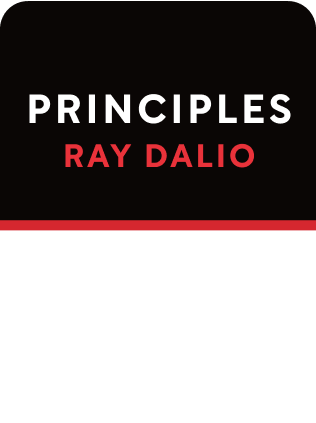

This article is an excerpt from the Shortform summary of "Principles: Life and Work" by Ray Dalio. Shortform has the world's best summaries of books you should be reading.
Like this article? Sign up for a free trial here .
What’s the best decision making method? How do you use it, and why does it work?
The Principles decision making method, developed by Ray Dalio, starts with being open minded. Then, you can make careful decisions based on understanding the full situation.
Keep reading to find out about the Principles decision making method.
Why Use The Principles Decision Making Method?
After you collect information, how do you make the best decisions for yourself? While each decision has unique particularities, Dalio describes general principles to take into any decision.
There are really only two steps to making a decision: 1) learning, and 2) deciding. The Principles decision making methodology can help you make decisions.
Learn Well
The foundation of the Principles decision making method is gathering the best information possible. To do so, you need to be radically open-minded and have thoughtful disagreements with people (both of these ideas are discussed in previous chapters).
To make sense of all the information you receive, you need to use each piece of information appropriately.
- Don’t treat all information equally. Some issues or facts are more important than others. Some people are more believable than others in a given topic area.
- Don’t mistake opinions for facts. Some people state their opinions as though they were facts, even though they have little justification for their confidence.
Understand the Situation
In the Principles decision making methodology, you should synthesize a good understanding of the situation that you’re making a decision for. This often means understanding the current performance level, as well as how that level has changed over time.
- For example, let’s say you’re figuring out what to do for your business that isn’t generating enough sales. You need to understand the current level of sales, as well as how the sales rate is changing over time.
- Some people look at an improving metric and are satisfied with the way things are, without noticing that it’s not improving quickly enough.
Focus on a “by and large” general level of understanding. Don’t get obsessed about details that don’t really matter. Don’t focus on edge cases or whether something is “totally true.”
- Use the 80/20 rule: what 20% of factors yield 80% of the outcome?
Levels of Detail
Understand the situation at multiple levels of detail. There is a top level of the most important points, as well as lower levels of supporting detail. Whenever you make a decision, you should be clear what level of detail you’re on.
In the Principles decision making methodology for example, here are levels of detail for someone who’s deciding about a career:
- High level, big picture: I want to do work that provides personal meaning and lets me engage directly with people.
- Supporting picture: I want to become a doctor.
- Subpoint: I need to get into medical school.
- Sub-subpoint: I need to get a good GPA in college.
- Sub-sub-subpoint: I shouldn’t go out and party tonight; I should study.
The lower levels of detail support the higher levels and form a complete logical picture. It’s important to see these different levels, rather than seeing all the points as a random pile of facts with no greater logic.
If this sounds like a foreign concept, realize that you navigate between different levels all the time without consciously realizing it.
To get better at navigating between levels, consciously think about what level you’re at in daily life. For example, if you’re in a conversation, make clear with the person you’re talking to whether you’re talking about main points or sub-points. It’s common for conversations to get derailed when they plunge deep into the weeds in details, without surfacing back up to the main points.
Decide Well
Once you’ve gathered your information, you can make a decision. Here are principles for making good decisions of any kind using the Principles decision making method.
Systematize Your Decision-Making
What hurts good decision making methodology the most is emotions. To avoid having your emotions bias your decisions, figure out the criteria underlying your decision-making, then automate the decision as much as you can.
We’ve learned that principles are the core of how you behave. Principles are fundamental truths that allow you to make better decisions quickly. When you recognize a situation as “another one of those,” you can just refer to your rules as a shortcut to good decision-making.
Ideally, you can convert your principles into algorithms and have the computer decide alongside you. Here’s how:
- Think through your principles for making decisions.
- Write them out in both words and algorithms.
- Back-test your algorithms with previous data to make sure they would have made good decisions in the past.
- Use the algorithms in real time, in parallel with your thinking brain.
(Shortform note: If it’s unclear what algorithms are, think of an “if-then” statement. For example, “If I receive enough money to pay my bills, I will save 20% of what remains in my retirement account. If I don’t, I will pay my highest interest bills first, then try to cut down my spending.” Having clear rules like this gives you an easy way to make decisions without thinking hard, from scratch, each time.)
Here are a few examples of how Dalio and Bridgewater automate decision-making:
- Dalio began by writing down his decision-making criteria for trading, so that when he closed the trade, he could reflect on how well the criteria worked. He would backtest these trading rules over a century of data in every country available.
- Bridgewater started using computers in the late 1970s to automate trading criteria and produce trading decisions in response to the environment. Indicators would catch shifting fundamentals and trend-following filters would confirm price movements.
- He’s started automating management and human relationships through tools like recording all meetings, the “dot collector,” and the pain button (more on these tools later). Computers can take in data points about people and figure out how to get the most out of people for each project.
Remember that good principles are timeless and universal. Have respect for history—what you see as a situation now may not have happened before in your lifetime. This can help your decision making method.
- Example: In 2008, Bridgewater had a “depression gauge” that indicated a bursting point to the debt bubble, since the costs of debt servicing were outpacing projected cash flows, and interest rates were so close to 0 that the Fed couldn’t reverse the downturn. Dalio studied history and read the newspapers from the time, day by day, through the Great Depression and the Weimar Republic to compare what was happening then with what was happening now. This confirmed that his principles on depressions were valid.
Between people, the principles are the true basis for disagreements. Rather than argue about the conclusions both of you have, argue about the principles that each of you used to arrive at your conclusions. If both of you agree on the principles, then you should also agree on the decision.
Never Take the First Available Option
Sometimes it appears you’re between a rock and a hard place. You only have a choice between two difficult options, or they each trade off something that is unnegotiable.
In these situations, instead of taking either difficult option, look harder for a novel solution that you haven’t found yet. You might be able to create a better solution that lets you have your cake and eat it too.
Here are examples of how Dalio was able to find an optimal solution where none was obvious.
Pure Alpha
In investing, it seemed Bridgewater could take one of two paths: high-risk high-return, or low-risk low-return. The former was so volatile it risked a total wipeout; the latter is unrewarding.
Instead, upon thinking harder, Dalio found his “holy grail” of investing—compiling a portfolio of uncorrelated assets could improve the return-to-risk ratio and reduce the risk of losing money in any given year. He could essentially have high-returns with lower risk.
This led to Bridgewater’s flagship fund, Pure Alpha, which has returned an annual average of 18% across its nearly 30 years and is considered the best performing fund of all time.

———End of Preview———
Like what you just read? Read the rest of the world's best summary of Ray Dalio's "Principles: Life and Work" at Shortform .
Here's what you'll find in our full Principles: Life and Work summary :
- How Ray Dalio lost it all on bad bets, then rebounded to build the world's largest hedge fund
- The 5-step process to getting anything you want out of life
- Why getting the best results means being relentlessly honest with everyone you work with






